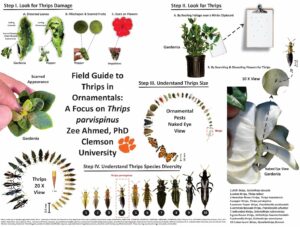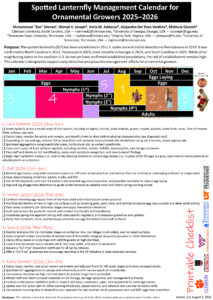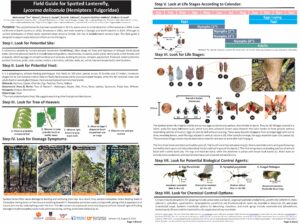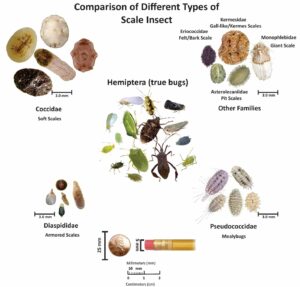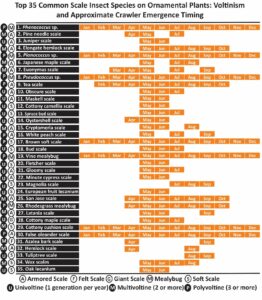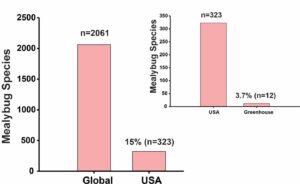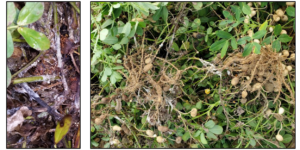Amrasca bigutulla, commonly know as the two-spot cotton leafhopper, has been detected in several states in the southeastern US, including Alabama, Georgia, Florida, and South Carolina. This species is native to southeast Asia, where it is an important pest of cotton and okra. The arrival of the insect in the continental U.S. is a concern for cotton and vegetable production, although its impact on yield remains unclear.
Adults are characterized by two black dots on the distal part of the forewings. Females oviposit on leaf tissues, and upon hatching, nymphs grow through four developmental stages in about 8 or 9 days. Adults live an additional 11 or 12 days. The short life cycle enables two -spot cotton leafhoppers to produce multiple generations throughout the season.
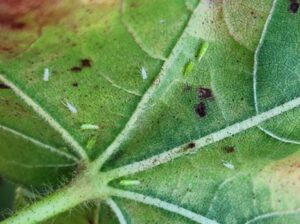
Figure 1. Adults and nymphs of two-spot cotton leafhopper feeding under cotton leaves.
Both nymphs and adults feed on the underside of cotton leaves by injecting its mouth part in the tissue and consuming plants sap (Figure 2). Feeding can cause the cotton leaves to turn yellow. The detection of two-spot cotton leafhoppers is a concern for cotton production in the southeastern US. In addition to quantifying potential impacts on yield, future research will focus on monitoring two-spot cotton leafhopper populations throughout the season, developing economic thresholds and treatment recommendations to provide management solutions for cotton growers.


Figure 2. Mild (left) and severe (right) injury of two-spot cotton leafhopper in cotton.
